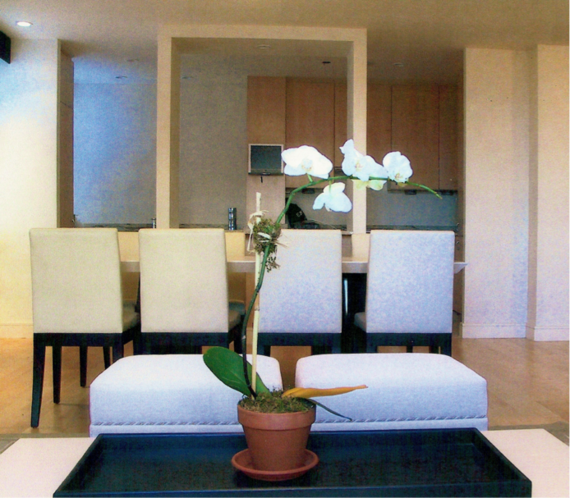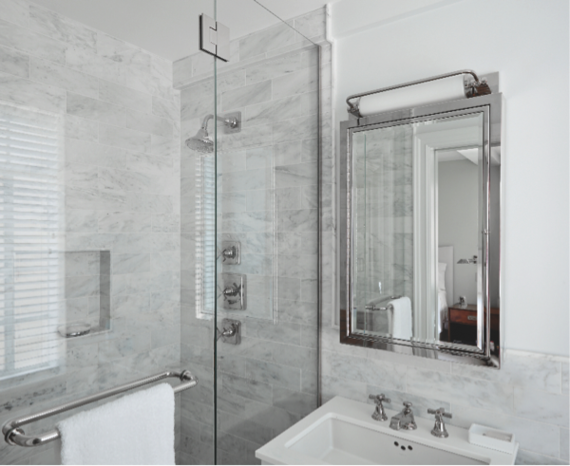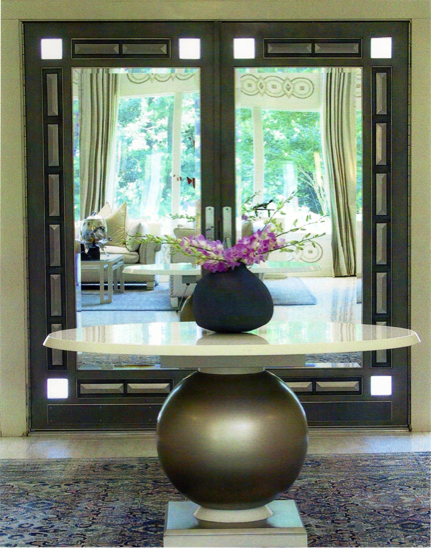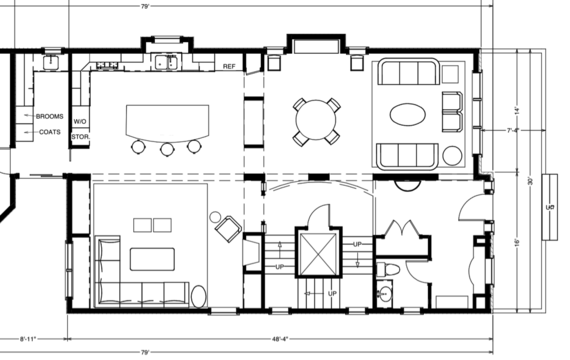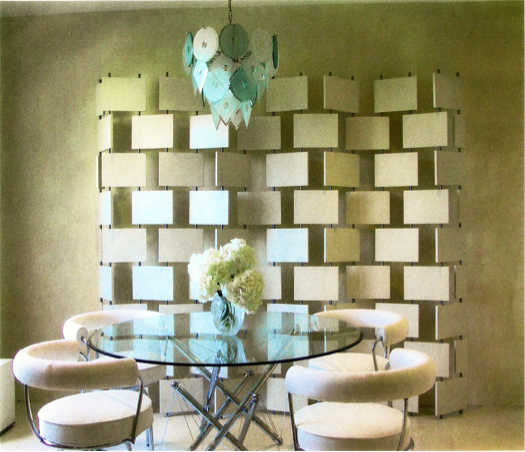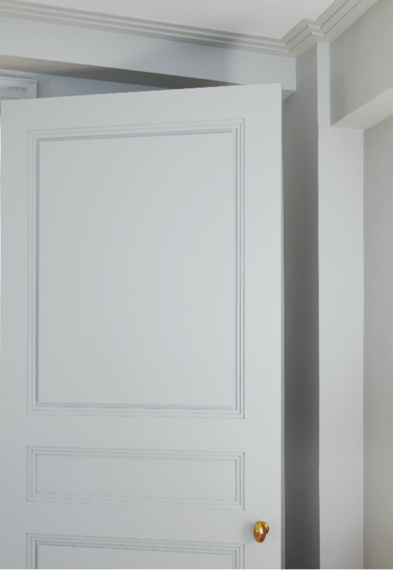So, you've just purchased the apartment next door and you want to combine the two spaces into a larger simplex. You can imagine the space, but you're not sure what all will go into it, and you want to make sure the two spaces flow together smoothly. But how do you get started? You know it's not a matter of just putting a hole through one wall! So to whom do you turn to make this happen?
You're at the top of this pyramid as the Client: your wants and needs dictate the project. The Client hires the Architect/Designer team, who will transform your wish list into concepts on paper. After that comes the Contractor, who executes those concepts and designs into the finished space for you!
But exactly what is the difference between a DESIGNER and a CONTRACTOR?
INTERIOR DESIGNERS generally specialize in form, function, space, and aesthetics. They are professionally trained to create pleasing environments through interior space manipulation and planning, such as architecture. Qualified through education and experience, interior designers create concepts and identify, research, and tackle design challenges the original space presents.
CONTRACTORS implement a designer's concepts, following their specified location of walls, details, and finishes; while the designer develops the 2D model on paper, the contractor uses the 3D materials to execute and fulfill the parameters of the design in a real, living space. Contractors do NOT play designer or architect, but they work with the designer to solve space issues while creating a beautifully finished product for the client.
Because these differences are important for clients to understand during the renovation process, I joined forces with one of Manhattan's top contractors, Chip Brian, founder and owner of the renowned Best & Company, to create a list of ways your designer and contractor work in tandem to make renovation easier on your budget, timeline, and wrinkle lines.
Contractors are experts in maximizing a home's structural bones by implementing a designer's plans.
Interior designers keep the renovation process smooth by listening to a client's needs and then designing and picking out everything for them, from lighting to wall color. During the planning phase, we solve design problems in our reconfigured design ideas. Contractors implement our design ideas while also solving structural problems, such as how to open up a space without knocking your house down. The final product is the perfect confluence of aesthetic idea and functional reality. How do contractors do this?
Best & Company Director of Business Development Dana Sandberg says, "We help the designers find the existing wall studs, the water pipes, and how much labor would be involved in moving them; we help designers figure out where to safely conceal the wiring, mechanicals, and ductwork that go into creating a comfortable 21st century home and still stay comfortably within your budget."
"The most effective architecture and design teams provide the client and contractor with detailed 'Before' and 'After' drawings," says Chip Brian. "That way, we know what's staying, what's going, what's being moved around in the existing footprint, and what's completely new."
Contractors and designers respect clients and neighbors during labor-intensive construction.
The construction phase of a project can be daunting, especially for clients who have never undertaken large-scale renovation projects. It is that transition time when drawings are in the process of evolving into reality, but are not quite complete, and the client sees half of the picture--it can be scary for them! It can also be difficult for a designer, who is only seeing pieces of the design. So how can contractors make this time easier for the clients and designers?
Chip says, "Even well-executed building projects come with inconveniences for the client and their immediate neighbors. It takes a little hammering, dust, and a stream of deliveries to complete a project. We do everything we can to reduce the stress by clearly defining what hours we will be on site, who is responsible for carting away what, and how."
Contractors aim to keep all of the "behind the scenes magic" that designers conjure as invisible as they can by planning in advance and communicating every step of the way. However, they urge homeowners to live off-site during major renovations, for their own safety, comfort, and convenience. Chip says, "Really, living off-site can keep the project on time and saves day-to-day distress. If a client decides to stay in the residence during construction, we do our best to make the process as painless as possible, like sealing off adjacent spaces, protecting original surfaces in common passageways, and leaving a clean worksite at each day's end."
Designers and contractors both deal with ordinances and board rules.
Designers need to know building codes and regulations, what a zoning regulation will permit, and how a board will liken to a certain design. Because designers know about what they can and cannot do, they help remove a lot of heartache and unrealistic expectations for the client.
Like designers, Chip needs to know the local rules and regulations. He wants to give clients exactly what they want, but he has to tell them whether he can within the codes and regulations. Want to start a kitchen renovation in your penthouse in February? "Sounds great," he says, "but many buildings in Manhattan strictly limit contractors to doing major construction only during summer months, when many residents are out of town and won't be inconvenienced by the construction."
Dana recalls a client who wanted to change the prewar casements in their home to energy-efficient insulated windows. Best & Company consulted with the architecture and design teams before the purchasing and construction phase, alerting them to exactly what style products had already met with the building management and local landmarks commission's approval. The design team had to modify their drawings and specifications slightly, but they didn't lose any production time or incur the costs associated with waste and construction delays that would have occurred if they had to wait for the arrival of the correct set of windows once the job was already underway.
"Experienced designers and contractors have been down that track before and will aid the client to retool particulars, so everything comes together beautifully and efficiently," says Dana.
Designers and contractors can work together to keep the budget and timeline on track.
Interior designers provide contractors with highly detailed drawings and specifications so they can make an appropriate estimate on your project. The contractor, Dana notes, goes on to price all materials, ordering in advance to assure availability and timely delivery. If, however, the budget comes in over what is expected, Chip would make invaluable suggestions and work with the designer to find creative solutions for reducing costs.
What about cost overruns? Chip says, "If we have to move the kitchen sink and dishwasher to the window wall, rerouting the new plumbing (if permitted by the building) and find an obstruction, we need to budget in the cost of doing so."
Or what about that wall you want to take down between the kitchen and living room to create a great room? "Sorry," Chip says, "It's holding up the rest of your house--so we work with the design team in advance to avoid expensive major changes midstream or a string of extras that can add up to a big cost for the client."
Plan for surprises and prepare to be flexible.
As in life, there are always unexpected surprises. We call these Field Conditions! "The road from start to finish is seldom without a bump or two," says Chip. "We've opened up walls to find mold that required an environmental remediation - an unexpected delay and expense."
He goes on to say that as "general contractors, we can't just cover the horrors and move on. We need to stop and make sure everything is structurally sound before finish work can begin. We work with the designer to adjust the timeline and the budget; if the budget is fixed, we have to engineer a way to keep the project affordable." According to Dana, "Even the best plans created by designers can hit bumps, but professionals who can clearly and quickly communicate the problem and work together on creative solutions are pure gold to the client!"
For any project, a contractor and designer each does what they do best, leaving their egos at the door! Their main objective is to work to the benefit of the client in building an aesthetically beautiful and functionally sound structure.
